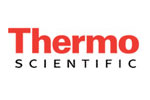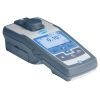Thermo Orion AQ3010 Turbidity Meter
Features
- Autoranges from 0-1000 NTU for fast results
- Easy vial indexing with continuous measurement mode
- Everything you need in a field case for easy storage and transport
- Free ground shipping
- Expedited repair and warranty service
- Lifetime technical support
- More
Overview
The Thermo Orion AQ3010 portable turbidity meter kit makes it easy to determine the clarity of samples with one keystroke and without an extra light shield cap in many environments. With autoranging from 0 to 1000NTUs, the small, waterproof, portable meter is very easy to use. The meter is supplied with ready-to-use, highly stable EPA-approved polymer bead primary standards. Calibration is easy with step-by-step prompts with the option to choose which points to calibrate. The standards can be used for a cal check at any time, verifying that readings are accurate.
Mechanics
The Thermo Orion AQ3010 portable turbidity meter uses the nephelometric principle of measurement for the detection of light scattered at a 90-degree angle from the incident light. This infrared (IR) incident light meter meets ISO Standard 7027 Turbidity method. The IR light source of the AQ3010 meter offers better performance than tungsten sources in highly colored solutions and also offers a lower cost of ownership than tungsten bulb meters. The meter saves time and money with minimal maintenance of its LED light source, consistent calibrations and confidence in the accuracy and reproducibility of your results.
Benefits
- Automatic calibration for quick sample measurements
- Calibration can be performed or updated using one to four standard points
- Packaged with everything needed for easy startup - including a set of primary calibration standards, vials, silicone oil and cloth and a vial cleaning brush
- Simple and intuitive interface with a large, bright LCD display and only 5 keys to perform all operations
- 3-year warranty
- Display: LCD
- Keys: Power, Cal, Scroll Up, Scroll Down, Read/Enter
- Automatic Range Selections and Resolution: 0.01 to 19.99 NTU with 0.01 NTU resolution
- Automatic Range Selections and Resolution: 20.0 to 99.9 NTU with 0.1 NTU resolution
- Automatic Range Selections and Resolution: 100-1000 NTU with 1 NTU resolution
- Accuracy: +/- 2% of reading +/- 1 LSD for 0-500 NTU
- Accuracy: +/- 3% of reading +/- 1 LSD for 501-1000 NTU
- Repeatability: Greater of +/- 0.01 NTU or +/- 1% of reading
- Response Time:< 6 seconds
- Sample Requirement: 10 mL
- Included Calibration Standards: 0.02, 20.0, 100, and 800 NTU
- Sample Vials: 25mm diameter with indexing mark
- Light Source: IR LED for ISO 7027 Turbidity measurement
- Power: 4 x AAA> 3000 tests (4 x AAA Lithium> 12000 tests)
- Battery conservation feature: Auto shutoff after 20 minutes of inactivity
- Ambient Operating Temperature: 0 to 50 C (0 to 90% Non-Condensing Relative Humidity at 30 C)
- Self Diagnostics: Yes, with troubleshooting error codes
- Waterproof rating: IP67
- Regulatory Approvals: CE, TUV 3-in-1 for CSA-US, FCC part 15
- Warranty: 3 year
- (1) AQ3010 turbidity meter
- (1) Set of EPA-approved polymer-based primary turbidity standards; 4 vials
- (1) Light shield cover
- (3) Vials
- (1) Lint-free cloth
- Silicone oil
- Batteries
- MSDS and user guide
- Field case
In The News
Two autonomous underwater vehicles launch in Lake Ontario
Two autonomous underwater vehicles are drifting through Lake Ontario, monitoring a slew of environmental metrics, according to a release from New York Sea Grant. The high-tech equipment is recording data on fish productivity, food web changes and algae levels. Each AUV weighs 42 pounds, is six and a half feet long and has a slew of sensors, including side scan sonar and 10-beam Doppler. Mapping capability complements collected parameters like temperature, turbidity, pH and levels of oxygen and phosphorus, among others. The research is made possible through the Cooperative Science Monitoring Initiative between the US and Canada called for under the Clean Water Act of 1972.
Read MoreSensors to help sort out Storm Lake's sediment issues in Iowa
Wind probably isn’t the first thing that people think of when considering causes of poor water quality, but sediment disturbances caused by the combination of shallow waters and high winds are threatening the health of Iowa’s Storm Lake. Although Storm Lake looks picturesque from a distance, the resuspension of sediment is affecting water clarity and exposing harmful nutrients in the water. Led by Clayton Williams and John Downing, professors in Iowa State University’s Department of Ecology, Evolution and Organismal Biology, a research team has begun monitoring the lake to determine the causes and potential solutions to the lake’s sediment issues.
Read MoreClemson studying construction site turbidity
Researchers at Clemson University will help the South Carolina Department of Transportation monitor pollutants discharged from construction sites, according to a release. The state agency wants to make sure it is ready for future federal pollution requirements. Turbidity monitoring near active SCDOT construction sites will judge the effectiveness of the agency’s stormwater runoff protocols. SCDOT will then design enhanced methods to better control runoff from construction sites. Heavy metals, toxic substances and biological pollutants are all associated with runoff from the sites. The study to find better ways to manage the pollutants is funded by a three-year grant from the federal government.
Read More










